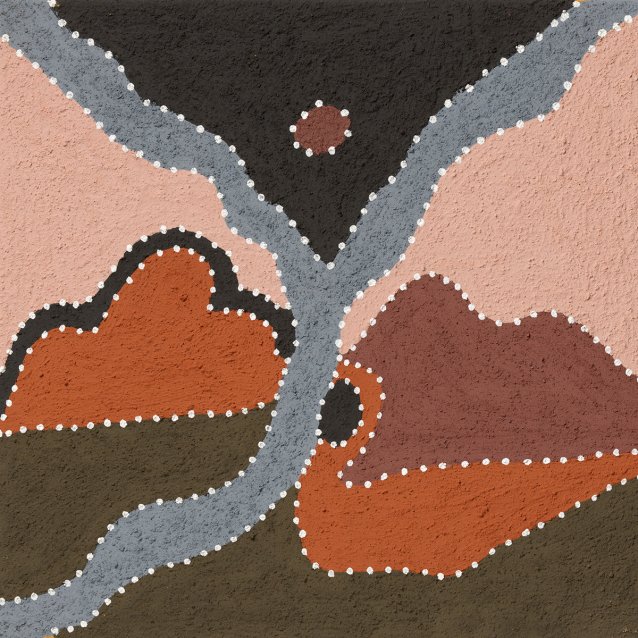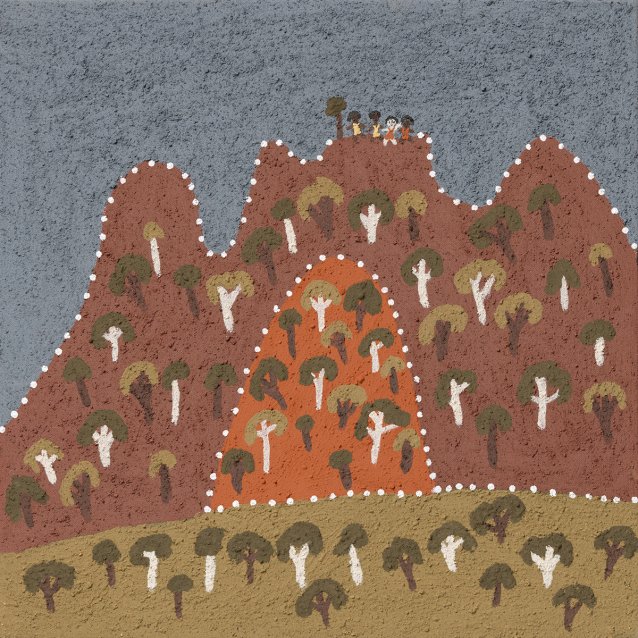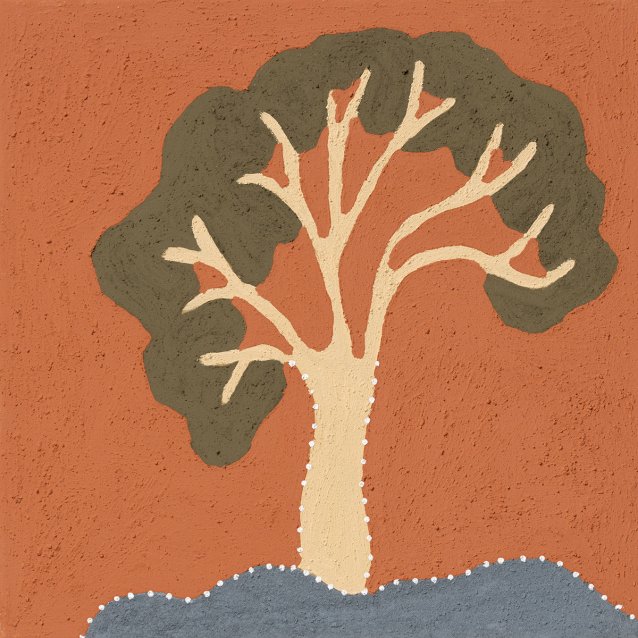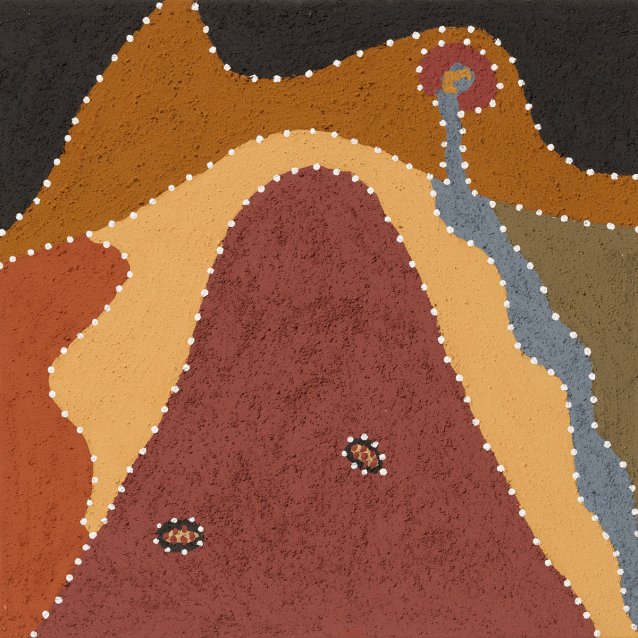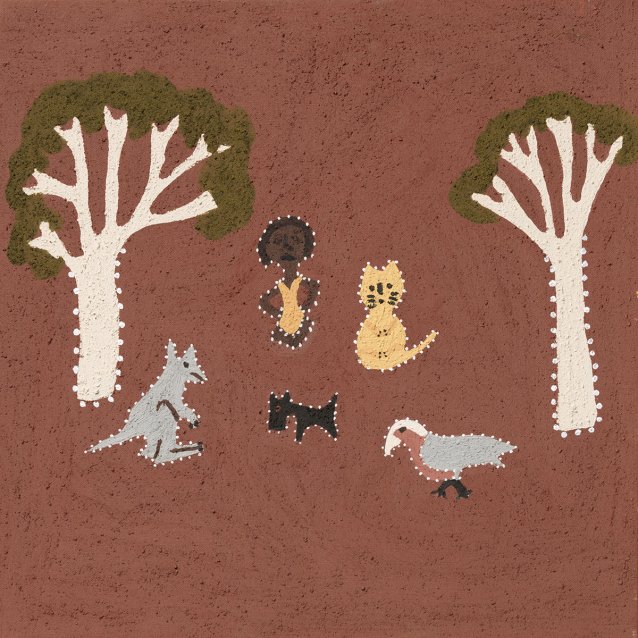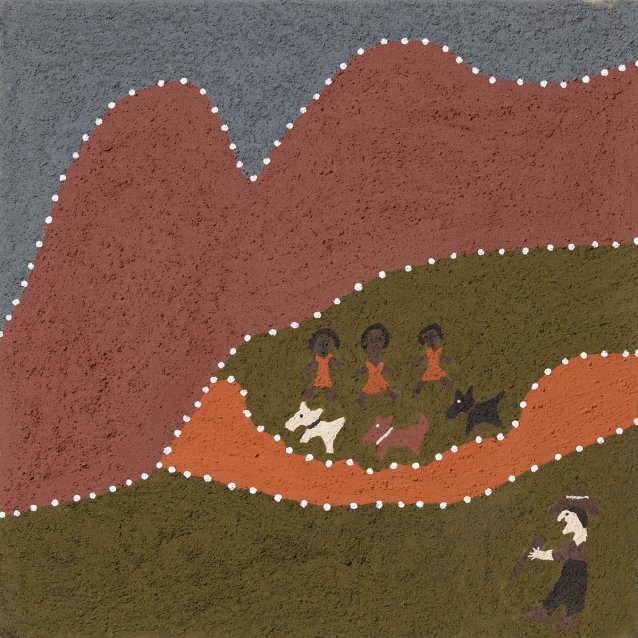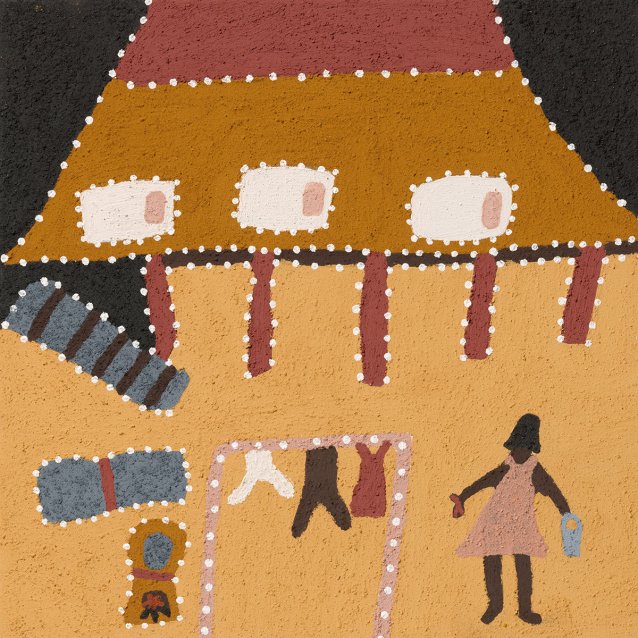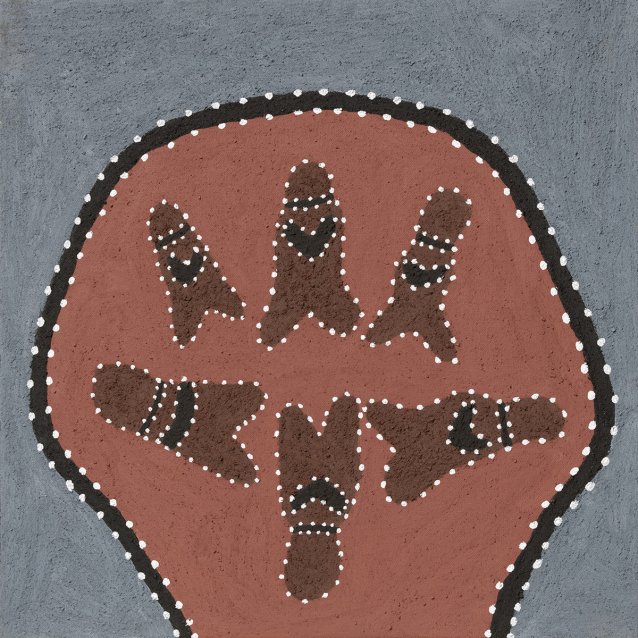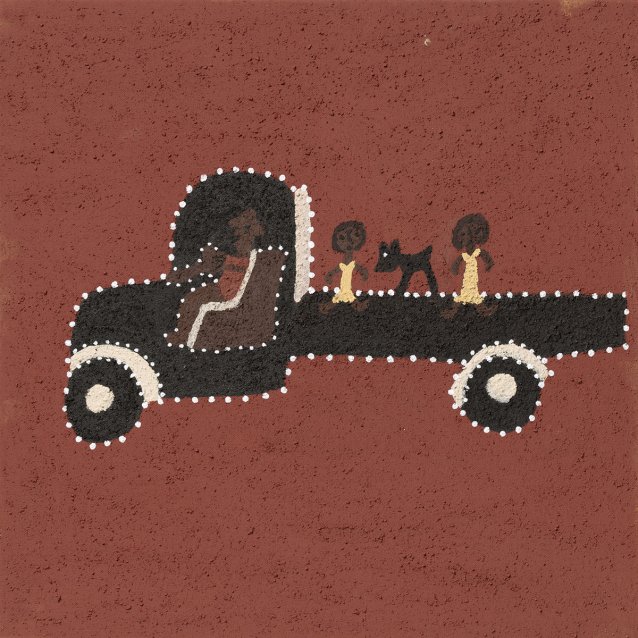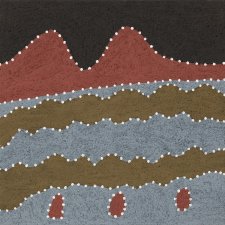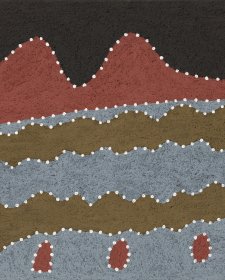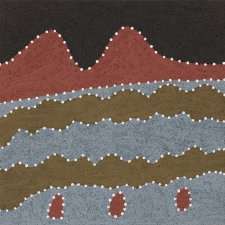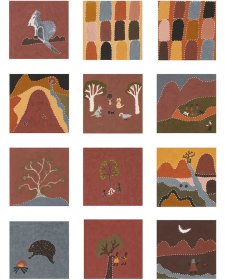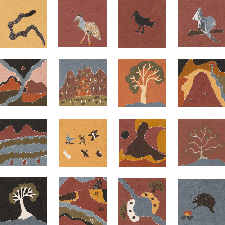“That’s in Violet Valley when that Rainbow Serpent locked my aunty’s hand. Two little girls bin run back and tell ‘em two old man that water bin rising up, that Rainbow Serpent bin lock ‘em (my aunty’s hand) and he bin nearly drowned. That two old man, they bin come and do blessing near la water, and they kill that Rainbow Serpent.”
Shirley’s mother, Madigan Thomas, and aunty, Old Bayallal (Judy), told her this story when she was young. Bayallal used to get little perch fish when she was younger, with the other girls. One day, she went to Violet Valley River (grey area) and stuck her hands in the water to catch the perch. Her hand got stuck in a rock (black circle) and some other young girls went to tell their elders. The two men came and did a ritual, somewhat like a mantha (welcome blessing ceremony): they smeared the leaves of the nearby river gum with their sweat and other bodily products (like dead skin), then introduced the leaves into the water to kill the Rainbow Serpent. They saw blood shooting out of the water, and the snake went off upstream, and wanted to come out of the water; it left a hole over there in that spot (brown circle).
